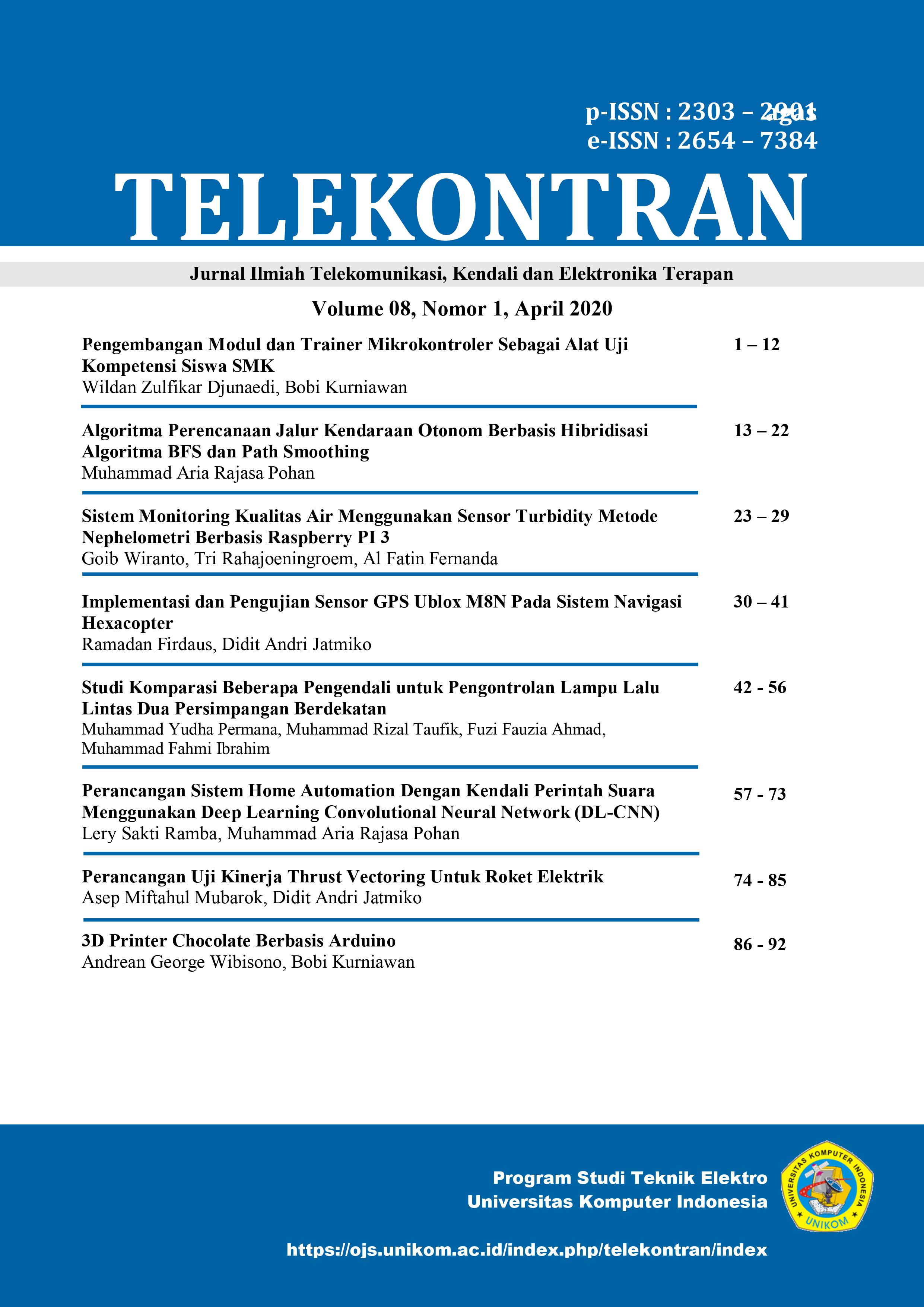Design and Implementation of Thrust vector Performance Test for Electric Rockets
Main Article Content
Abstract
Research in the area of ​​rocket technology can be an indicator of a country's progress. Rocket technology is usually used to go into space and as a defense tool. In the military, the type of rocket used is the type of missile or commonly called a missile. The most famous type of missile is a cruise missile. Cruise missiles can fly with horizontal trajectories. Flying cruise missiles use wings as an aerodynamic force generator to control movement in the air. Basically cruise missiles are unmanned aircraft designed to carry conventional explosive bullets over long distances. One type of control rocket that is being developed in Indonesia is an electric rocket that can fly horizontally. In order for a rocket to fly rapidly horizontally on the axis of the rocket's throw, the rocket must have a vector thrust control system, a system that can change the direction of the wind contained in the rocket booster. Thrust vectoring system is the ability of a rocket to manipulate the direction of the thrust produced by the engine or its driving motor. This is done with the aim of controlling the angle or speed of the rocket. This study will discuss thrust vectoring systems so that rockets can rise quickly on the pitch axis. In conducting research there are several problems encountered. The researchers have formulated several problems, namely the creation of a thrust vectoring system and the stability of the rocket, which aims to speed up the takeoff process. This study uses the method of literature, the method of observation, testing, evaluation and conclusions. Based on the results of testing the rocket can fly fast on the pith shaft using a vector thrust system with a time of 4,6 seconds to reach a height of 30m..
Keyword Â: Missile, electric rocket, Thrust vectoring, Axis Pitch, System stability
Downloads
Article Details
Section

This work is licensed under a Creative Commons Attribution-ShareAlike 4.0 International license.
